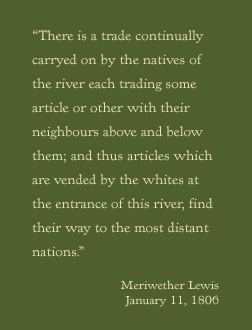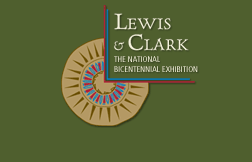
 |
INTRODUCTION TO UNIT Target Grade Level: This unit presents the story of the Lewis and Clark expedition from a new perspective, that of trade and property. It highlights the commercial motivations the expedition and explores the established American Indian trade networks of the Northwest. It also asks how various cultures define wealth. The benefits of trade, the influence of culture on trading practices, the specialization of American Indian tribes, and the influence of geography on trade are all presented in the historical context of the expedition. This unit also offers many opportunities to help students use primary sources. Students can learn to investigate and analyze a historical topic through the artifacts and written records from people of the time. Through analysis of a variety of primary source materials, the lessons encourage students to draw their own conclusions, citing evidence from the sources. They can compare concepts of wealth of American Indians, Euro-Americans, and American teenagers today. They can look at American Indians through the eyes of Lewis and Clark and analyze the effects of point of view on historical narrative. Through the use of lessons in this unit, students will come to understand that the Lewis and Clark expedition was also a trade mission. Trade benefits societies, and value varies among cultures. Explore Connections to Today for this unit. MAJOR UNDERSTANDINGS Trade is an important component in the well-being of societies. What is traded, how it is traded, and what is valued all vary with culture. ESSENTIAL UNIT QUESTIONS
KEY KNOWLEDGE OBJECTIVES Students will:
KEY SKILL OBJECTIVES Students will:
FORMATIVE ASSESSMENT SUGGESTIONS
|
|||
 |
 |
 |
 |
